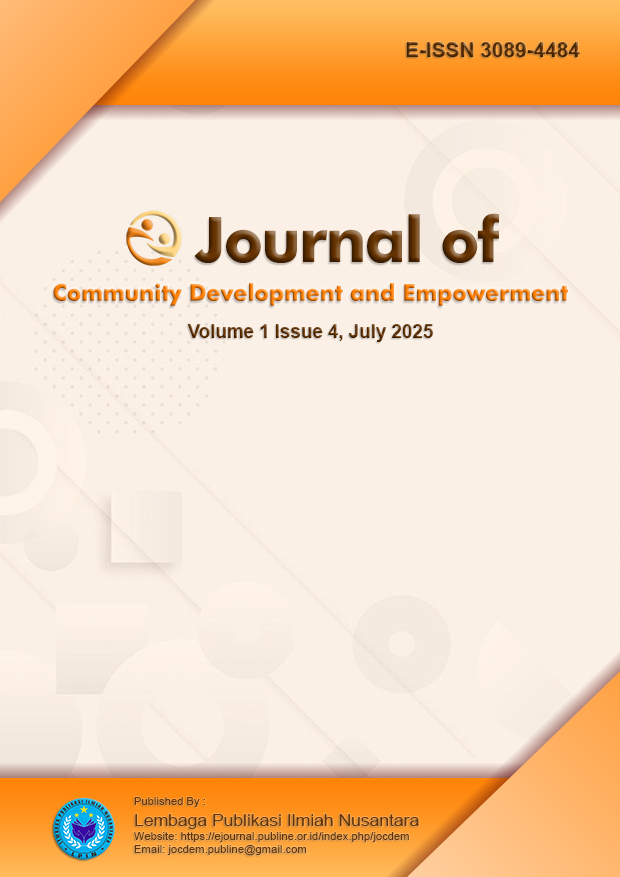Pelatihan Penggunaan Bahan Kimia untuk Cat Air Ramah Lingkungan
DOI:
https://doi.org/10.70716/jocdem.v1i4.227Keywords:
Watercolor, Natural Chemicals, Environmentally Friendly, Natural, ChemicalsAbstract
This paper explores the potential of natural chemical ingredients in the development of eco-friendly watercolor paints. Natural pigments derived from plants such as indigo, turmeric, and beetroot, combined with binders like gum arabic and egg yolk, offer promising alternatives to synthetic compounds. The study focuses on evaluating the color intensity, adhesion, drying time, and safety of these natural ingredients. The findings suggest that natural-based formulations can meet aesthetic and functional requirements while significantly reducing environmental impact. This supports a greener approach to art materials, aligning with sustainable and health-conscious innovation trends.
Downloads
References
Sano, N., & Cumpson, P. J. (2016). Surface analysis characterisation of gum binders used in modern watercolour paints. Applied Surface Science, 364, 37–45.
Berrie, B. H., & Strumfels, Y. (2017). Thoughts on the fading of cochineal based watercolor pigments. Heritage Science, 5, 30.
Calovi, M., & Rossi, S. (2024). Exploiting turmeric’s coloring capability to develop a functional pigment for wood paints: Sustainable coloring process of polyamide 11 powders and their strengthening performance. Coatings, 14(7), 858.
Jung, Y. N., & Hong, J. (2021). Changes in chemical properties and bioactivities of turmeric pigments by photo degradation. AIMS Agriculture and Food, 6(2), 754–767.
Hong, X., et al. (2024). Look but don’t touch: Non invasive chemical analysis of organic binders in painting materials and conservation studies. Analytica Chimica Acta. Advance online.
Downloads
Published
How to Cite
Issue
Section
License
Copyright (c) 2025 Alif Gita Arumsari, Desiana Nur Indra Kusumawati

This work is licensed under a Creative Commons Attribution-ShareAlike 4.0 International License.











